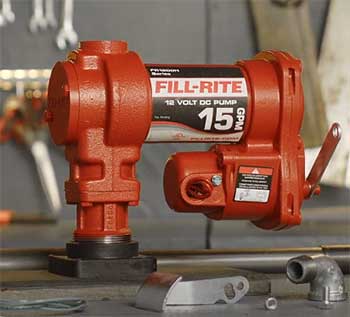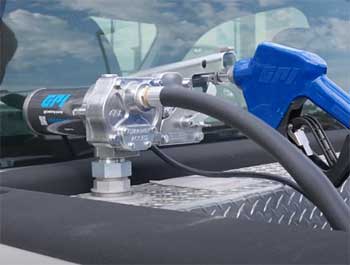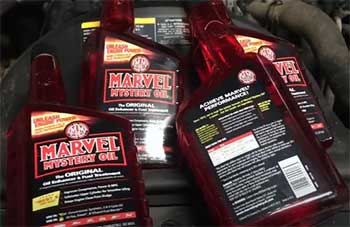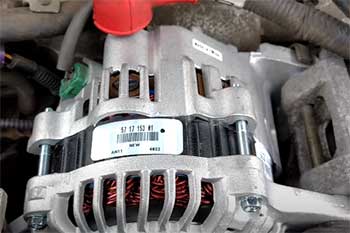A fuel transfer pump is essentially an implement that is used to move fuel from one place to another. Most often, fuel is moved from a storage tank to a vehicle using a fuel transfer pump. The way this is done is via a dispensing nozzle.
Two popular and high-quality fuel transfer pumps available in the market today are the Fill Rite 15 GPM and the GPI 15 GPM fuel transfer pumps. The main difference between them lies in their voltage.
Besides that, they differ in some other areas as well. If you want to know more, keep reading.
A Quick Comparison Table
| Specification | Fill Rite 115V Fuel Transfer Pump | GPI 12V Fuel Transfer Pump |
| Pump Construction | Durable cast iron construction | High quality diecast aluminum construction |
| Pump Voltage | 115V Voltage | 12V Voltage |
| Compatible Fuel For Transferring | Gasoline, diesel fuel, ethanol blends, and kerosene | Gasoline, diesel fuel, ethanol blends, and kerosene |
| Maximum Flow Rate of Pump | 15 GPM | 15 GPM |
| Duty Cycle of The Pump | 30 minutes | 30 minutes |
| Motor Horsepower of The Pump | 0.17 | 0.20 |
| Operating Temperature Range of The Pump | -17° F to 104° F | -20° F to 125° F |
| Max Working Pressure of The Pump | 16 PSI | 15 PSI |
| Price of The Pump | $566.00 Approx. | $489.99 Approx. |
Key Comparison Between Fill Rite And GPI Fuel Transfer Pump
After going through the comparison table, you should have a pretty good idea about all the characteristics and differences between the two different fuel transfer pumps.
Now, let’s go a bit more in-depth into the characteristics of the two pumps and really break down and analyze each different characteristic of the Fill Rite 115V and the GPI 12V fuel transfer pumps separately.
- Construction of Each Fuel Pump

This area is where both the fuel pumps differ the most, in their construction.
The Fill Rite 115V 15 GPM fuel transfer pump is constructed of durable, heavy-duty cast iron.
This sturdy construction provides both high quality and long-lasting performance.
On the other hand, the GPI 12V 15 GPM fuel transfer pump is made of high-quality and durable aluminum.
Both the cast iron and the aluminum construction offer good performance even after prolonged usage.
However, if we are to compare the two, the cast iron constructed Fill Rite fuel transfer pump is far more durable than the aluminum construction of the GPI fuel transfer pump.
- Compatible Fuel For Transferring By Each Pump
When we compare the types of fuel that can be properly transferred, there is no difference between the Fill Rite and the GPI fuel transfer pumps.
Both the fuel transfer pumps can comfortably transfer all kinds of fuel such as Gasoline, diesel fuel, ethanol blends, and kerosene.
- Fuel Flow Rate Achieved By Each Pump
When considering which fuel transfer pump to buy, probably the most important factor to consider is its flow rate.
The flow rate of a fuel transfer pump determines how quickly it can dispense fuel from one place to another. It is measured in Gallons Per Minute or GPM.
Both Fill Rite and the GPI pumps have measured fuel flow rates of 15 GPM. So, they both perform similarly in the most important area.
- Duty Cycle of Each Fuel Transfer Pump
When comparing the duty cycles of both the Fill Rite and GPI fuel transfer pumps, as with the previous characteristic, they perform similarly.
Both the Fill Rite and GPI pumps have approximate duty cycles of 30 minutes each.
- Horsepower of The Motor
Both the Fill Rite and GPI pumps have slightly differing horsepower in their motors.
The Fill Rite fuel transfer pump has a horsepower of 0.17 HP in its motor.
On the other hand, the GPI fuel transfer pump has a slightly higher horsepower of 0.20 in its motor.
- Operating Temperature Range
Both the pumps differ pretty significantly from each other if we compare their operating temperature ranges.
The Fill Rite fuel transfer pump has an operating temperature range between -17° F and 104° F.
On the other hand, the GPI fuel transfer pump has an operating temperature range between -20° F and 125° F.
- The difference in Voltage Between Each Fuel Pump
Another area where the Fill Rite and the GPI fuel transfer pumps differ is their voltage.

The Fill Rite 115V fuel transfer pump, as the name implies has a voltage of 115V.
This makes the pump very powerful but also very dangerous. A voltage of 115V can be fatal to a human being.
On the other hand, the GPI 15V fuel transfer pump has an extremely low voltage of 15V if we compare it with the Fill Rite pump.
This makes the GPI pump not nearly as powerful as the Fill Rite.
However, an upside to that is that the 15V makes the GPI pump more efficient than the Fill Rite pump. Another benefit is that there is little risk with a voltage of 15V.
A 15V voltage going through the body would feel like a minor shock rather than being potentially fatal like a 115V voltage.
- Max Working Pressure
If we compare the max working pressure of each of the pumps, they differ only very slightly.
The Fill Rite pump has a maximum working pressure of 16 PSI.
On the other hand, the GPI pump has a slightly less max working pressure of 15 PSI.
- Price of Fuel Transfer Pump
The last thing we will be looking at is the difference in price between the two pumps.
The Fill Rite pump has a price tag of $566.00. On the other hand, the GPI pump is slightly cheaper, coming in at $489.99.
Also Read: Is Quantum Fuel Pump Worth It?
Which Fuel Transfer Pump Should You Choose?
We now come to the ultimate question. Which pump should you choose? The answer to this question depends entirely on you and your preferences.
The Fill Rite pump is more durable and powerful but is also more expensive.
Compared to that, the GPI pump is not as durable or powerful but is cheaper and more efficient.
Take all these into account before you make your final decision.
Conclusion
Fuel transfer pumps are very useful implements in many circumstances. They allow easy and seamless transfer of fuel from one place to another.
Whether it is from a tank to a car, a car to a tank, or between two different cars, both these fuel transfer pumps can do it.
Hopefully, this comparison of the Fill Rite and GPI fuel transfer pumps gave you all the information you were looking for.

